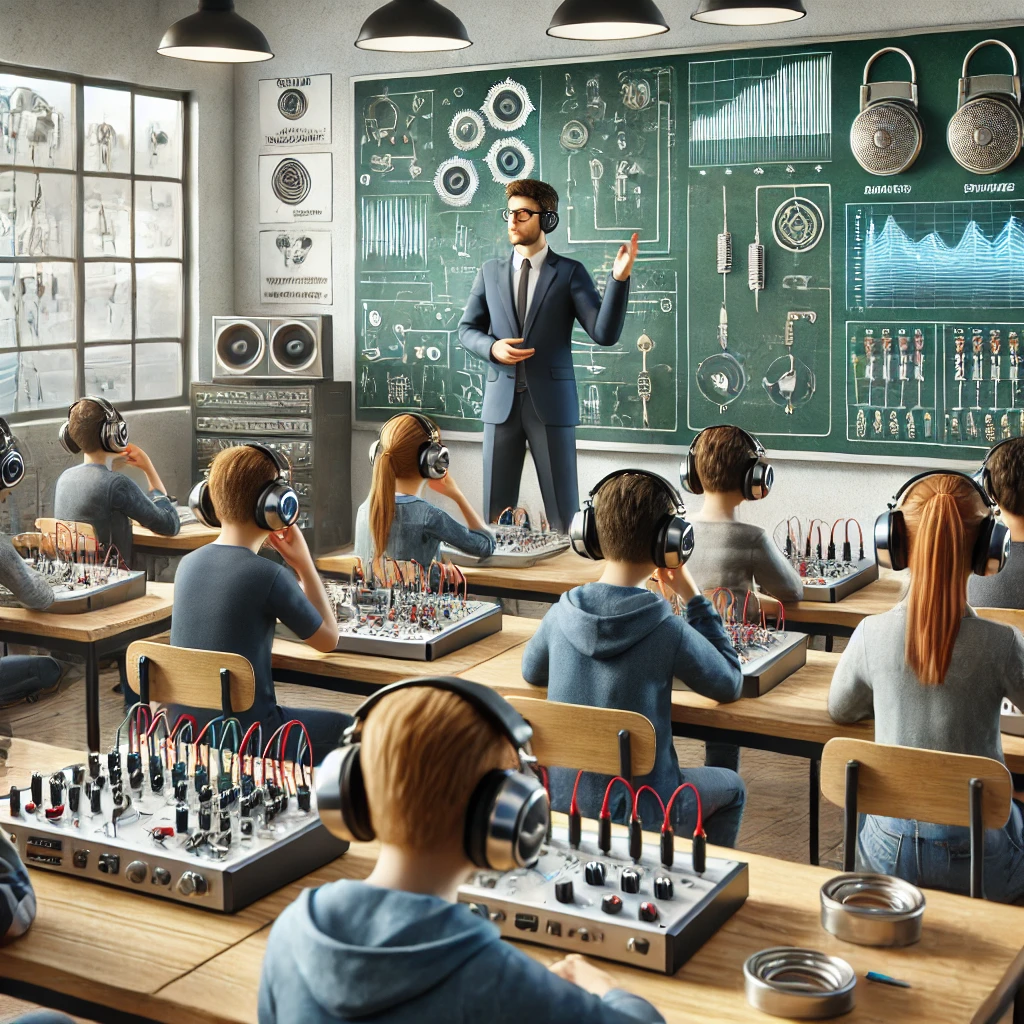Engineering Headphones Lesson Plan: An Introduction
Engineers are absolutely important in defining the future in a fast-paced, tech-driven society; knowing the tools they create is quite essential for education. Among these instruments, headphones are a fascinating case of technology combining mechanical and electrical engineering concepts. An interesting and interactive class may involve teaching students about the engineering of headphones, which would provide insightful analysis of acoustics, electronics, materials science, and much more.

Suitable for high school or beginner college courses, this paper offers a thorough engineering headphones lesson plan-building process. Whether you are a STEM teacher or an inquisitive student, you will discover useful advice, tools, and FAQs to deepen your knowledge of headphone engineering.
Why Educate About Engineering Headphones?
Everywhere—in classrooms, companies, gyms, and homes—headphones are a great topic for teaching engineering concepts. Students who grasp the science and mechanics underlying common items like headphones develop a better respect for engineering as a field. Here is the significance of teaching about headphone engineering:
- Headphones touch on several areas of engineering including electrical engineering (for circuitry), mechanical engineering (for the physical design), and even materials science (for sound insulation).
- Teaching headphone engineering helps students to grasp how their preferred devices are created, hence providing them concrete understanding of the practical uses of engineering knowledge.
- Hands-On Learning: Constructing and testing headphone prototypes in the classroom provides students a vibrant, participatory learning environment.
Important Ideas to Include in the Engineering Headphones Lesson Plan
Developing a successful engineering headphones lesson plan calls for a methodical approach beginning with knowledge of the fundamental ideas underlying headphone design. Some of the fundamental ideas listed below to present to your pupils:
1. Sound Waves and Acoustics
Acoustics is among the most interesting aspects of headphone design. Understanding how sound waves function helps one to appreciate how headphones generate sound since headphones are meant to turn electrical impulses into sound. Talking about the following ideas will assist students:
- Frequency: The production and perception of sound waves of various frequencies (pitch).
- Amplitude: The correlation between sound volume and amplitude of sound waves.
- Sound Pressure Level: How headphones control sound pressure to protect the ears.
2. Circuitry and Electronics
Since headphones are electrical devices, knowing the circuits driving them is absolutely vital. Teach your pupils the fundamentals of audio circuitry, including:
- Transducers: How balanced armature drivers or dynamic drivers turn electrical signals into sound.
- Impedance: The link between a headphone’s impedance and the power needed to drive them.
- The wiring guaranteeing correct signal flow to the speakers within the headphones.
3. Materials Engineering
The longevity, comfort, and sound quality of headphones are affected by materials used in their manufacturing. Talk about the following materials:
- Speakers and Drivers: What materials make up coils, magnets, and diaphragms?
- Talk about the materials of the headbands and ear cups for comfort and sound isolation.
- Wires and Connectors: What materials are selected to guarantee flexible, durable connections and least signal loss?
4. Design and Ergonomics
The physical design of headphones affects their use and user comfort. Talk about things like:
- How headphones are made to fit various head sizes and avoid pain.
- Noise Cancellation: Modern headphone design’s relevance and active and passive noise-canceling technology.
Crafting the Engineering Headphones Lesson Plan: A Step-By-Step Guide
Having addressed the main issues, let us talk about how to properly organize your lesson plan. Here is a proposed structure for a hands-on engineering headphones class:
1. Lesson Introduction: 15 minutes
Start by exposing kids to the headphone universe. Talk about the many headphone kinds—over-ear, in-ear, noise-canceling, wireless—and encourage students to reflect on their ideas on how headphones function. This is a wonderful method to pique their interest.
2. Basic Concepts Lecture: 30 minutes
Focusing on acoustics, electronics, and materials science, give a summary of the main ideas. Explain the parts involved and use diagrams and models to illustrate how sound is produced in headphones. Should it be feasible, present a genuine set of headphones and explain how the sound is generated.
3. Hands-On Activity: 45 minutes
Divide students into groups and let them either construct a simple headphone circuit or take apart antique headphones to investigate their parts. Encourage pupils to consider the design decisions and how those decisions affect comfort and sound quality.
4. Discussion and Problem Solving: 20 minutes
Have students think on a practical issue connected to headphones—for instance, how would they enhance the design for improved noise isolation or sound clarity? As a class, talk about these concepts.
5. Conclusion and Wrap-Up: 15 minutes
Review the main ideas covered in the lesson and give relevant homework or additional study subjects. Encourage pupils to investigate the job prospects in product design and audio engineering.
READA ABOUT:Ultimate Guide to Black Friday Gaming Chair Deals: Best Options & Tips for 2025
Five Most Frequently Asked Questions Regarding Engineering Headphones
1. How do headphones function?
Through the movement of a diaphragm, which vibrates and creates sound waves traveling to the ear, headphones turn electrical signals from a device—such as a phone or computer—into sound.
2. What are headphones’ major parts?
Headphones mainly consist of the driver (transducer), ear cups, diaphragm, magnets, coils, and wires. Every one of these elements affects the comfort of the headphones to wear and the generation of sound.
3. What kind of headphones exist?
There are several different kinds of headphones: wireless, in-ear, on-ear, and over-ear. Every kind provides various advantages including noise isolation, portability, and sound quality.
4. How can I raise the sound quality of my headphones?
Focusing on superior components—such as high-quality drivers, wider diaphragms, and materials that lower distortion—helps one to improve sound quality. Ensuring the headphone design has appropriate acoustics and sound isolation also helps, too, of course.
5. Can headphones be made for certain goals?
Certainly, headphones can be made for particular uses such as gaming, music production, noise reduction, and athletics. Often, specialized designs meet the particular requirements of certain consumers including comfort, sound isolation, or durability.
Final Thoughts
A lecture on engineering headphones not only exposes students to the interesting realm of acoustics and electronics but also motivates them to consider critically about design and utility. Teachers can provide their pupils a dynamic and educational experience by means of the organized lesson plan and emphasis on the fundamental engineering ideas. A well-designed lesson plan can give students in a classroom or hands-on workshop good knowledge of the world of engineering and help them to be interested in future advancements.

